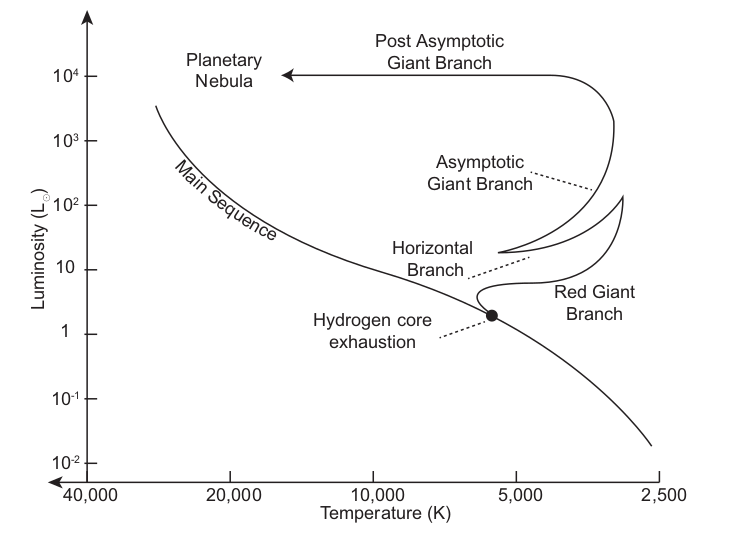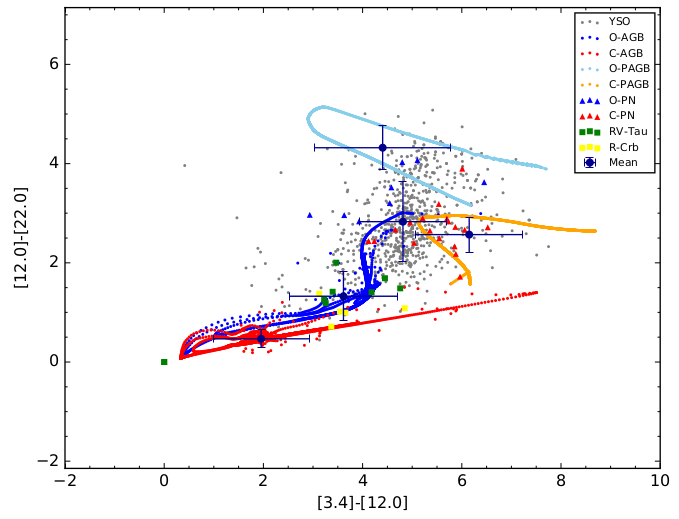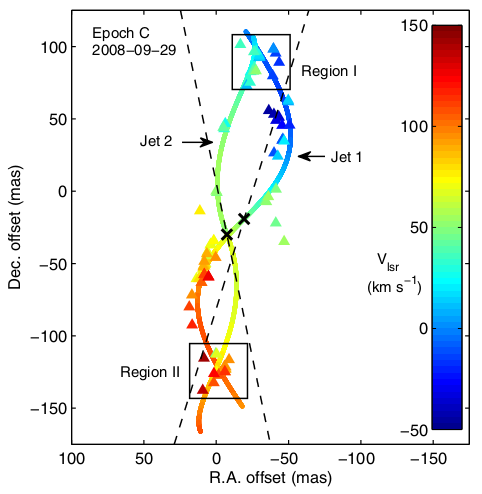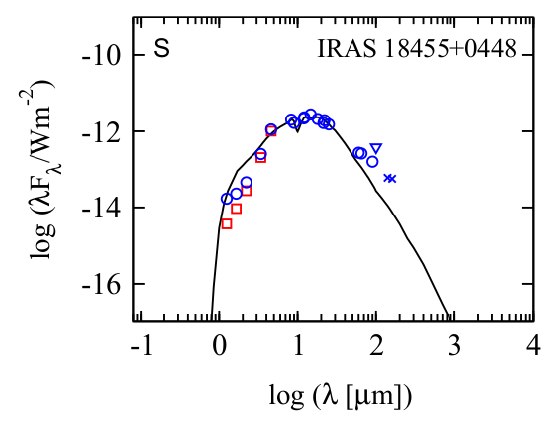Before switching to machine learning and data science, I was an astrophysicist. Here I would like to outline several astrophysical projects that I have participated. Some of the details can be found from my published papers.
The late-stage of stellar evolution

My work was mainly about, but not limited to, the late-stage of stellar evolution. Objects in this stage are generally called the evolved stars, which basically means "dying" stars. One of the early motivations to study how stars evolve is to learn about the fate of our Sun, which also governs the fate of human beings. As our Sun evolves, it will subsequently go through different phases, e.g., the red giant and asymptotic giant branch (AGB) phases, before turning into a white dwarf at the very end of its life. Nowadays, people realize that understanding the late-stage of stellar evolution is important not only because it tells our destiny, but it also tells why we are here. A lot of fundamental elements such as carbon and oxygen are created in the core of evolved stars like the AGB stars. The materials sent back to the interstellar space contribute to the formation of new generation stars. Some more complicated compounds could be formed under suitable conditions, which may ultimately become the building blocks of life.
Statistical analysis of huge astronomical data sets

With the advancement in both computer hardware and computational methods, processing huge data sets becomes possible as we enter the so-called "big data" era. One of my projects was about finding the best photometric criteria for selecting candidates of evolved stars and young stellar objects from 2 million sources with multi-band photometric data. Identification of these objects is important for understanding stellar population and evolution process. I developed my own Python libraries for this project with the data analysis software pandas. Statistical methods were applied in trying to distinguish objects with different chemistry and evolutionary statuses on various two-colour diagrams and magnitude-colour diagrams. I was also exploring the higher dimension N-colour diagrams with machine learning libraries such as scikit-learn.
Observations and kinematical modelling of circumstellar masers

Maser is the microwave version of laser. In space, some molecules such as SiO, OH, and water become maser emitters under special circumstances. Masers can be used to probe the inner structure and kinematics of the circumstellar envelopes of evolved stars, e.g., the AGB stars. Some rare collimated stellar jets can also be traced by maser emission. Therefore, finding more maser sources will give us more valuable examples for analyzing the circumstellar envelopes. I conducted several successful maser surveys with international telescope facilities such as the Effelsberg 100m Radio Telescope in Germany. I also developed a kinemetical model for the high velocity jets traced by water maser emission from a post-AGB star, aka the "water fountains (WFs)", using data obtained by the Very Long Baseline Array in the U.S.
Modelling of the spectral energy distributions of evolved stars by dust radiative transfer codes

While the inner fine structures of some circumstellar envelopes can be probed by masers, the radiation process occurs in the outer region beyond the dust formation zone has to be studied via the spectral energy distributions (SEDs). The observed radiation is mainly coming from the infrared range and hence we rely on the data collected by space telescope missions such as 2MASS, WISE, AKARI, etc. In one project, I modelled the SEDs of several WFs by the dust radiation transfer code DUSTY. The WFs are found to have different envelope morphologies (at the very least, not all of them are spherical), which implies that they can be coming from different stages of the envelope morphological metamorphosis. This finding contradicts a common belief in the field that WFs are objects at the earliest stage of the morphological changing process. The role of WFs in the late-stage of stellar evolution is still unclear and indepth studies are required.